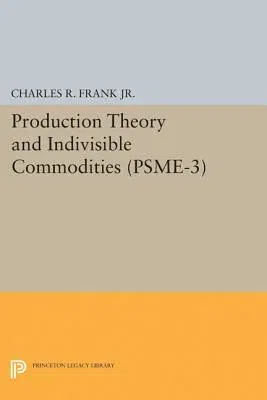Charles Raphael Frank
(Author)Production Theory and Indivisible Commodities. (Psme-3), Volume 3Paperback, 8 December 2015

Qty
1
Turbo
Ships in 2 - 3 days
In Stock
Free Delivery
Cash on Delivery
15 Days
Free Returns
Secure Checkout

Part of Series
Princeton Studies in Mathematical Economics
Part of Series
Princeton Legacy Library
Part of Series
Princeton Legacy Library, 1886
Print Length
154 pages
Language
English
Publisher
Princeton University Press
Date Published
8 Dec 2015
ISBN-10
0691622124
ISBN-13
9780691622125
Description
Product Details
Author:
Book Format:
Paperback
Country of Origin:
US
Date Published:
8 December 2015
Dimensions:
23.39 x
15.6 x
0.84 cm
ISBN-10:
0691622124
ISBN-13:
9780691622125
Language:
English
Location:
Princeton
Pages:
154
Publisher:
Series:
Weight:
226.8 gm